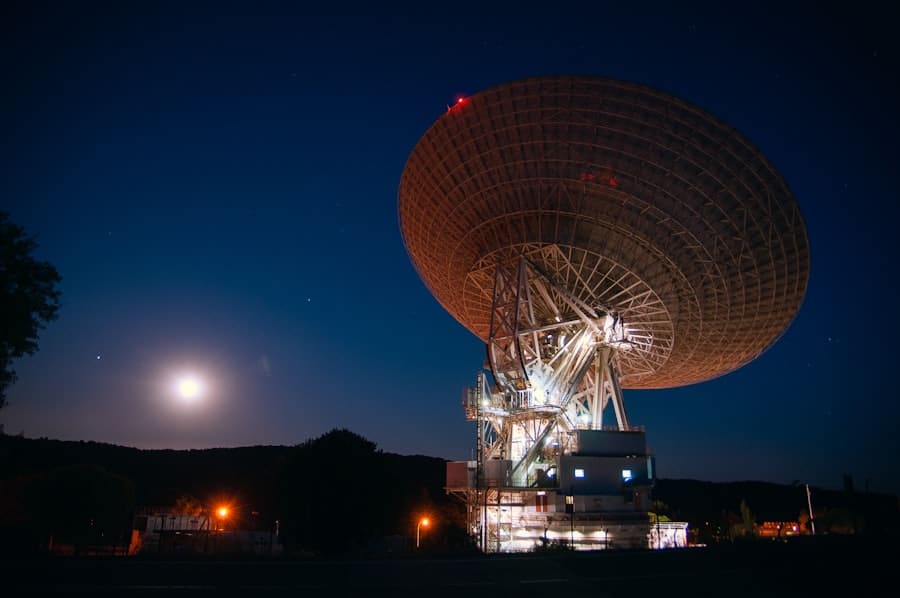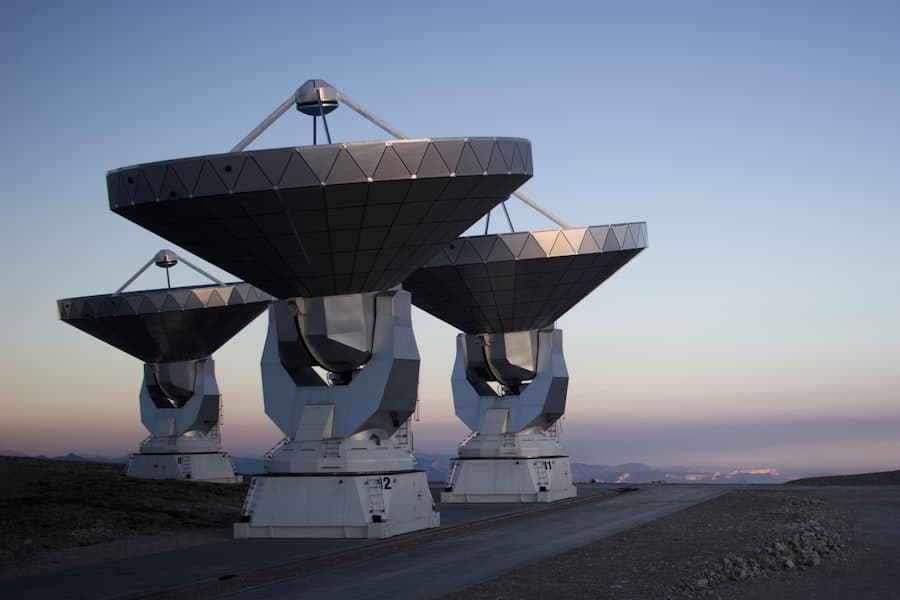Interplanetary communication networks represent a frontier in the realm of space exploration, enabling the exchange of information across vast distances that separate celestial bodies. As humanity’s ambitions extend beyond Earth, the need for robust communication systems that can operate in the harsh environment of space becomes increasingly critical. These networks are not merely an extension of terrestrial communication systems; they require innovative approaches to address the unique challenges posed by the vastness of space, the delay in signal transmission, and the need for reliable data transfer between spacecraft and ground stations on Earth.
The concept of interplanetary communication networks encompasses a variety of technologies and methodologies designed to facilitate communication between spacecraft, satellites, and planetary bases. This includes the use of radio waves, laser communications, and advanced networking protocols that can adapt to the dynamic conditions of space. As missions to Mars, the Moon, and beyond become more frequent, establishing a reliable communication infrastructure is essential for mission success, scientific collaboration, and the safety of astronauts.
The development of these networks is not just a technical challenge; it also involves strategic planning and international cooperation to ensure that all stakeholders can benefit from shared knowledge and resources.
Key Takeaways
- Interplanetary communication networks are essential for enabling communication between spacecraft, rovers, and Earth-based stations in deep space missions.
- Current challenges in interplanetary communication include long communication delays, limited bandwidth, and signal degradation over long distances.
- Advancements in interplanetary communication technology, such as optical communication and software-defined radios, are improving data transmission rates and reliability.
- Artificial intelligence plays a crucial role in interplanetary communication by enabling autonomous decision-making, data analysis, and predictive maintenance for space missions.
- Interplanetary communication has significant implications for space exploration, including enabling real-time control of spacecraft, remote scientific experiments, and collaborative missions with international partners.
Current Challenges in Interplanetary Communication
One of the most significant challenges in interplanetary communication is the vast distances involved, which lead to substantial signal delays. For instance, a signal sent from Earth to Mars can take anywhere from 4 to 24 minutes to arrive, depending on the relative positions of the two planets. This delay complicates real-time communication and necessitates autonomous systems on spacecraft that can operate independently without immediate input from mission control.
The latency in communication can hinder decision-making processes during critical mission phases, such as landing or navigating through hazardous environments. Additionally, the harsh conditions of space pose further challenges to communication systems. Cosmic radiation, solar flares, and other environmental factors can disrupt signals and damage equipment.
The need for redundancy in communication pathways becomes paramount; if one system fails, another must be ready to take over without loss of data or functionality. Moreover, the limited power available on spacecraft means that communication systems must be energy-efficient while still providing high data rates.
Advancements in Interplanetary Communication Technology

Recent advancements in technology have begun to address some of the challenges associated with interplanetary communication. One notable development is the use of laser communications, which offer significantly higher data rates compared to traditional radio frequency systems. NASA’s Laser Communications Relay Demonstration (LCRD) aims to test these technologies by transmitting data at rates up to 1.2 gigabits per second, a substantial increase over current capabilities.
This leap in data transmission speed could revolutionize how scientists receive information from distant missions, allowing for more detailed imagery and faster scientific analysis. Another area of progress is the implementation of advanced networking protocols designed specifically for space environments. The Delay/Disruption Tolerant Networking (DTN) protocol has been developed to handle the intermittent connectivity that characterizes interplanetary communication.
DTN allows data packets to be stored temporarily on relay nodes until a connection is available, ensuring that information is not lost during periods of signal disruption. This technology has been successfully tested on missions such as NASA’s Mars rovers, demonstrating its potential to enhance communication reliability across vast distances.
The Role of Artificial Intelligence in Interplanetary Communication
Artificial intelligence (AI) is poised to play a transformative role in interplanetary communication by enhancing data processing capabilities and improving decision-making processes. AI algorithms can analyze incoming data streams in real-time, identifying patterns and anomalies that may require immediate attention from mission control. This capability is particularly valuable during critical mission phases when timely responses are essential for success and safety.
Moreover, AI can optimize communication protocols by dynamically adjusting parameters based on current conditions. For instance, machine learning algorithms can predict signal degradation due to environmental factors and adjust transmission power or frequency accordingly. This adaptability not only improves the reliability of communications but also conserves energy—an essential consideration for long-duration missions where power resources are limited.
As AI continues to evolve, its integration into interplanetary communication systems will likely lead to more autonomous spacecraft capable of making informed decisions without waiting for instructions from Earth.
Implications of Interplanetary Communication for Space Exploration
The implications of effective interplanetary communication extend far beyond mere data transfer; they fundamentally shape the future of space exploration itself. Reliable communication networks enable real-time collaboration among scientists and engineers across the globe, facilitating joint missions and shared research initiatives. For example, as international partnerships grow in space exploration—such as NASA’s Artemis program with various space agencies—interplanetary communication becomes a linchpin for coordinating efforts and sharing findings.
Furthermore, as humanity prepares for crewed missions to Mars and beyond, robust communication systems will be vital for astronaut safety and mission success. Continuous contact with Earth will provide astronauts with access to critical support and guidance during their missions. In addition, effective communication will allow for the transmission of scientific data back to Earth for analysis, fostering a deeper understanding of other planets and their potential for supporting life or future human habitation.
Security and Privacy Concerns in Interplanetary Communication

As interplanetary communication networks develop, security and privacy concerns become increasingly prominent. The transmission of sensitive data—whether it be scientific findings or personal information about astronauts—requires robust encryption methods to prevent unauthorized access or interference. The potential for cyberattacks on space assets poses a significant risk; malicious actors could disrupt communications or manipulate data streams, leading to catastrophic consequences for missions.
Moreover, as more nations and private entities engage in space exploration, establishing protocols for data sharing and ownership becomes essential. Questions surrounding intellectual property rights and data sovereignty must be addressed to ensure that all parties involved in interplanetary missions can collaborate effectively while protecting their interests. Developing comprehensive security frameworks that encompass both technological safeguards and legal agreements will be crucial as we move toward a future where interplanetary communication is commonplace.
Collaborative Efforts in Developing Interplanetary Communication Networks
The development of interplanetary communication networks is inherently collaborative, requiring input from various stakeholders including government agencies, private companies, and international organizations. Initiatives like the European Space Agency’s (ESA) SpaceDataHighway project exemplify this collaborative spirit by leveraging partnerships with commercial entities to create advanced communication systems using laser technology. Such collaborations not only pool resources but also foster innovation by bringing together diverse expertise from different sectors.
International cooperation is also vital in establishing standards for interplanetary communication protocols. Organizations like the International Telecommunication Union (ITU) play a crucial role in coordinating frequency allocations and ensuring that all nations can operate their space assets without interference. As more countries enter the arena of space exploration, establishing a framework for collaboration will be essential to avoid conflicts over resources and ensure equitable access to interplanetary communication capabilities.
The Future of Interplanetary Communication: Opportunities and Limitations
Looking ahead, the future of interplanetary communication holds immense opportunities as well as inherent limitations. The potential for enhanced scientific discovery through improved data transmission capabilities is vast; as technology continues to advance, we may see unprecedented levels of detail in our understanding of other planets and celestial phenomena. Furthermore, as commercial space ventures expand their reach into deep space exploration, new business models may emerge that leverage interplanetary communication networks for profit while contributing to scientific knowledge.
However, limitations remain that must be addressed if we are to realize this potential fully. The physical constraints imposed by distance and environmental factors will always present challenges that require innovative solutions. Additionally, ethical considerations surrounding privacy, security, and equitable access must be navigated carefully as we build these networks.
Balancing technological advancement with responsible stewardship will be crucial as humanity embarks on this new chapter in its exploration of the cosmos. In conclusion, interplanetary communication networks are not just technical constructs; they are vital components that will shape our future endeavors in space exploration. As we continue to push the boundaries of what is possible beyond our planet, developing effective communication systems will be essential for ensuring mission success, fostering international collaboration, and unlocking the mysteries of our solar system and beyond.
In exploring the advancements in interplanetary communication networks, it’s essential to consider the technological tools that aid in designing and visualizing complex systems. An article that complements this topic is “The Best Software for Interior Design in 2023,” which discusses cutting-edge software that can be utilized for creating detailed and precise models. These tools are not only pivotal in interior design but also in simulating and planning the infrastructure required for interplanetary communication.

